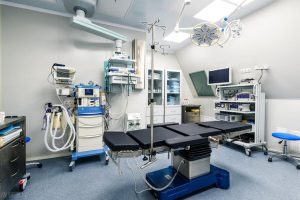Ensuring Patient Safety: Importance and Challenges of Medical Equipment Disinfection
Table of Contents
Why is medical equipment disinfection important?
What are the challenges faced in medical equipment disinfection?
How can surgical instruments be properly disinfected?
What are the recommended methods for disinfecting respiratory equipment?
How should syringes and needles be disinfected?
What factors should be considered when disinfecting medical equipment?
Conclusion
1. Why is medical equipment disinfection important?
Effective disinfection of medical equipment plays a crucial role in maintaining a sterile and safe healthcare environment. It is important for several reasons:
Infection Control: Proper disinfection reduces the risk of healthcare-associated infections (HAIs) by eliminating harmful microorganisms.
Preventing Cross-Contamination: Thorough disinfection between patients prevents the transfer of microorganisms, minimizing the spread of infections.
Surgical Site Infections (SSIs) Prevention: Disinfection of surgical instruments reduces the risk of SSIs by eliminating potential sources of postoperative infections.
Sterile Procedure Execution: Disinfected equipment helps maintain a sterile environment, reducing complications and promoting successful outcomes.
Regulatory Compliance: Adhering to stringent disinfection guidelines ensures patient safety and minimizes legal and regulatory risks.

2. What are the challenges faced in medical equipment disinfection?
While the importance of medical equipment disinfection is widely recognized, several challenges are encountered in practice. These challenges include:
Equipment Complexity: Medical devices can be intricate and consist of multiple components, making thorough disinfection challenging.
Compatibility with Disinfectants: Different types of medical equipment may require specific disinfectants that are compatible with their materials and components.
Time Constraints: Busy healthcare settings often face time constraints that can pose challenges to proper disinfection.
Training and Education: Ensuring healthcare professionals receive adequate training and education on proper disinfection practices is crucial.
3. How can surgical instruments be properly disinfected?
To ensure proper disinfection of surgical instruments, the following steps are typically involved:
Pre-Cleaning: Remove visible debris and organic matter from the instruments using enzymatic cleaners or detergent solutions.
Decontamination: Use appropriate disinfection methods, such as high-level disinfection or sterilization, depending on the instrument and its intended use.
Drying and Packaging: Thoroughly dry the instruments to prevent microbial growth and properly package them to maintain sterility.
4. What are the recommended methods for disinfecting respiratory equipment?
Disinfection of respiratory equipment, including ventilator circuits, masks, and nebulizers, may involve the following steps:
Disassembly: Take apart the respiratory equipment, ensuring all components are accessible for thorough cleaning.
Cleaning: Clean the components using appropriate cleaning agents or disinfectants, paying special attention to areas prone to contamination.
Rinse and Dry: Thoroughly rinse the components to remove any remaining cleaning agents and allow them to air-dry or use drying equipment specifically designed for respiratory devices.

5. How should syringes and needles be disinfected?
While single-use syringes and needles should not be reused, reusable syringes and needles require meticulous disinfection. The following steps are generally recommended:
Disassembly: Completely disassemble the syringe, removing the plunger and needle if applicable.
Cleaning: Clean all components with detergent or disinfectant solutions, ensuring thorough removal of any medication residue.
Sterilization or High-Level Disinfection: Depending on the type of syringe and needle, employ proper sterilization or high-level disinfection methods, such as autoclaving or chemical sterilization.
6. What factors should be considered when disinfecting medical equipment?
Several factors should be considered when disinfecting medical equipment, including:
Manufacturer Instructions: Follow the disinfection guidelines provided by the device's manufacturer.
Regulatory Requirements: Adhere to regulatory guidelines and standards for equipment disinfection.
Healthcare Facility Protocols: Follow the disinfection protocols established by the healthcare facility.
Compatibility of Disinfectants: Use disinfectants that are compatible with the materials and components of the medical equipment.
7. Conclusion
Effective disinfection of medical equipment is vital for ensuring patient safety and preventing the spread of infections in healthcare settings. Thorough disinfection of surgical instruments, respiratory equipment, syringes, and other medical devices reduces the risk of healthcare-associated infections.